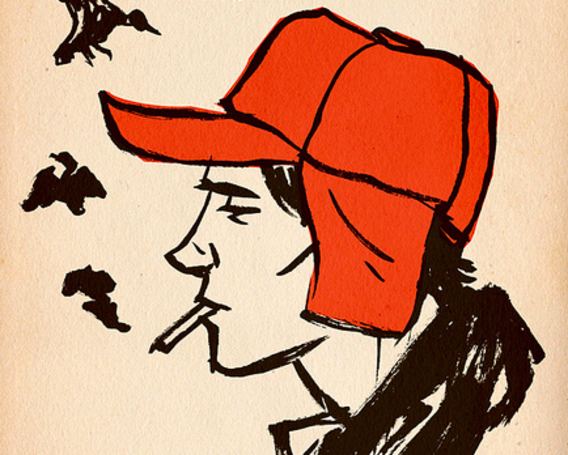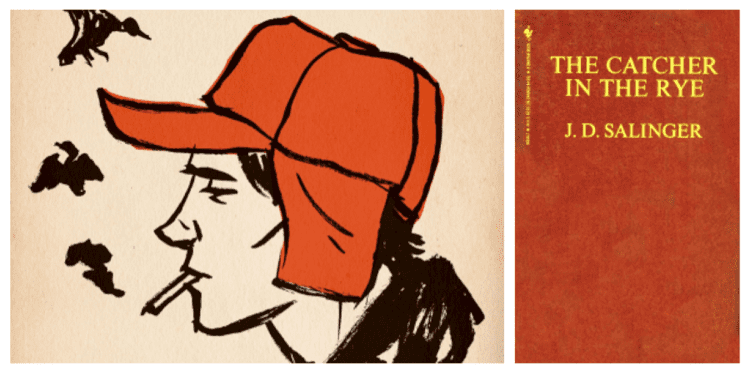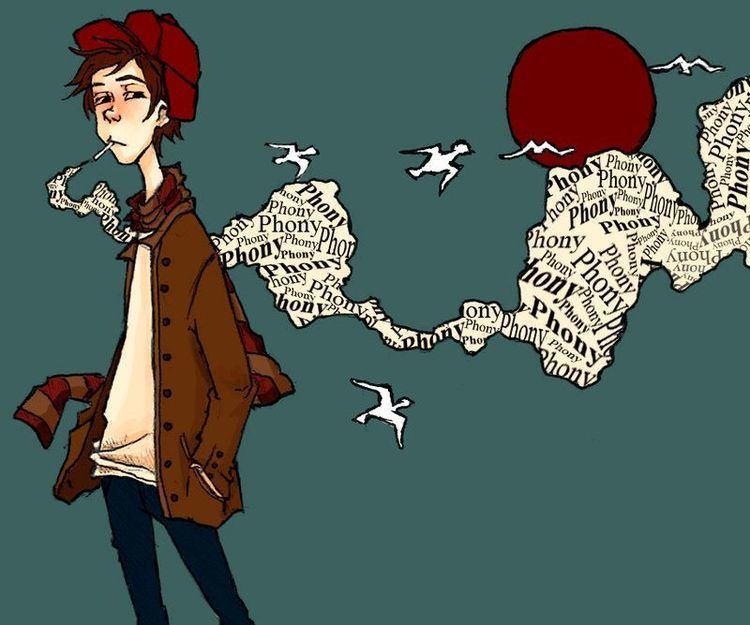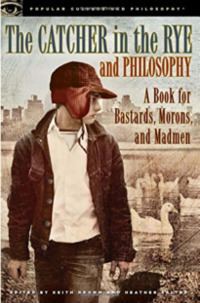Created by J. D. Salinger Occupation Student Creator J. D. Salinger | Gender Male Nationality American | |
 | ||
Similar Phoebe Caulfield, Glass family, Jay Gatsby, Atticus Finch, Nick Carraway | ||
Language voice and holden caulfield the catcher in the rye part 1
Holden Caulfield (born c.1933) is the fictional teenage protagonist and narrator of author J. D. Salinger's 1951 novel The Catcher in the Rye. Since the book's publication, Holden has become an icon for teenage rebellion and angst, and now stands among the most important characters of 20th-century American literature. The name Holden Caulfield was used in an unpublished short story written in 1942 and first appeared in print in 1945.
Contents
- Language voice and holden caulfield the catcher in the rye part 1
- Appearance and personality
- In The Catcher in the Rye
- In other works
- Caulfield family in other works
- Cultural impact
- References

Although it has been conjectured that J. D. Salinger got the name for Holden Caulfield in The Catcher in the Rye when he saw a marquee for Dear Ruth (1947), starring William Holden and Joan Caulfield, Salinger's first Holden Caulfield story, "I'm Crazy," appeared in Collier's on December 22, 1945, a year and a half before this movie was released.

Appearance and personality

Holden is naive and at the same time resentful of the adult world. One of Holden's most striking and quintessential qualities is his powerful revulsion for "phony" qualities, a catch-all term for the perceived hypocrisy that irritates Holden. It is this cynicism that causes him to distance himself from other people, despite wanting connection as well. Holden is very much a character of contradiction; at seventeen years of age he is six feet two-and-a-half inches (189 cm) tall, and already has some grey hair – though he himself admits that he sometimes acts more like a 13-year-old than an adult. He continually fails classes.
In The Catcher in the Rye
Holden Caulfield is the narrator and main character of The Catcher in the Rye. The novel recounts Holden's week in New York City during Christmas break following his expulsion from Pencey Prep, a preparatory school based loosely on Salinger's alma mater Valley Forge Military Academy. Holden Caulfield tells his story with surprising honesty from a hospital in California in a cynical and jaded language.
In other works

The character, as Holden Morrisey Caulfield, also appears in Salinger's "Slight Rebellion off Madison", published in the December 21, 1946, issue of The New Yorker. An earlier version of this story, titled "Are You Banging Your Head Against a Wall?" was accepted for publication by The New Yorker in October 1941, but was not published then because editors found the tone to be too desolate for its readership. An edited version of this short story later became the basis of several chapters in the middle-late section of The Catcher in the Rye dealing with Caulfield's date with Sally Hayes, during which he confesses his desire to run away with her, he meets Carl Luce for drinks, and he makes a drunken phone call to the Hayes home. Unlike the similar sequence in the novel, Caulfield is on a Christmas break from school, and, in the story, the interlude with Sally is split into two occurrences. Also, the meeting with Carl Luce is considerably briefer in the story than in the novel.

Caulfield also figures as a character in the short story "I'm Crazy", published in Colliers (December 22, 1945), and other members of the Caulfield family are featured in "Last Day of the Last Furlough", published in The Saturday Evening Post (July 15, 1944) and the unpublished short stories "The Last and Best of the Peter Pans" (c. 1942) and "The Ocean Full of Bowling Balls" (c. 1945). "I'm Crazy" is closely related to the first chapter of The Catcher in the Rye. It begins with Caulfield standing on a hill at "Pencey Prep" watching a football game below, and develops as Holden visits with his history teacher, Mr. Spencer, for a talk about his expulsion from school and his future. Several other details match those found in the first chapter of Catcher, including a reference to the mother of one of Caulfield's schoolmates and to his own mother sending him a gift of ice skates, but the story ends with his returning home instead of running away from school. Once home, he is not shown confronting his parents, who, according to the maid, are playing bridge. Instead, he goes to speak to Phoebe. Their dialogue is similar to that which appears in the later chapters of The Catcher in the Rye. The other notable feature of the story is that his sister Viola gets her first, and only, mention in the Caulfield saga.
"This Sandwich Has No Mayonnaise" (Esquire, 1945) reveals that Holden went missing in action during the war.
Caulfield family in other works
"Last Day of the Last Furlough" relates the final day of Babe Gladwaller before he leaves to fight in World War II. Gladwaller spends part of the day with his little sister before Vincent Caulfield (later renamed D.B. in the novel) arrives. At that point Vincent is a fellow soldier about to leave for the war. Vincent announces that his brother, Holden, has been declared missing in action. Gladwaller's relationship with his younger sister can be seen as a parallel to Caulfield's relationship with Phoebe.
"The Last and Best of the Peter Pans" relates the story of Vincent's (D.B.) draft questionnaire being hidden by his mother. The events occur just after the death of Kenneth (later renamed Allie) and reveal the anxiety of Mary Moriarity, an actress and Caulfield's mother. The story is notable for the appearance of Phoebe and Vincent's statements about a child crawling off a cliff.
In "The Ocean Full of Bowling Balls," Vincent (D.B.) recalls the day his brother Kenneth (Allie) died. The story is set at the Caulfield summer home on Cape Cod. Several details make their way from this story into Catcher, including the characterization of Allie; Allie's poetry-inscribed left-handed baseball mitt; Vincent's girlfriend, Helen, who keeps her kings in the back row (like Jane Gallagher); and Caulfield's critical view of others. While the cause of death in Catcher is leukemia, here it is due to an unspecified heart condition. Toward the end of the story, Kenneth and Vincent are on the beach. Kenneth decides to go swimming and is knocked out by a wave. Holden, just home from camp, is waiting on the porch with his suitcases as Vincent comes back with Kenneth's unconscious body. Kenneth passes away later the same night. The story was reportedly sold to a magazine, only to be taken back by Salinger before publication.
Another short story of note with relationship to Caulfield is "The Boy in the People Shooting Hat," which was submitted to The New Yorker sometime between 1948 and 1949 but was never published. It focuses on a fight between two characters named Bobby and Stradlater over Bobby's feelings about Jane Gallagher. This story appears to form the basis for several key scenes in the first several chapters of The Catcher in the Rye.
In Seymour: An Introduction a Curtis Caulfield is mentioned in passing as "an exceptionally intelligent and likable boy" who appeared on the same radio show as Seymour and the other Glass children. He is reportedly "killed during one of the landings in the Pacific."
Cultural impact
Holden Caulfield is one of the most enduring characters in 20th-century American fiction. It has been suggested that Salinger himself related so closely to Holden that he was protective of the character. This was the reason he was unwilling to allow filming of the book or use of the character by other writers.
